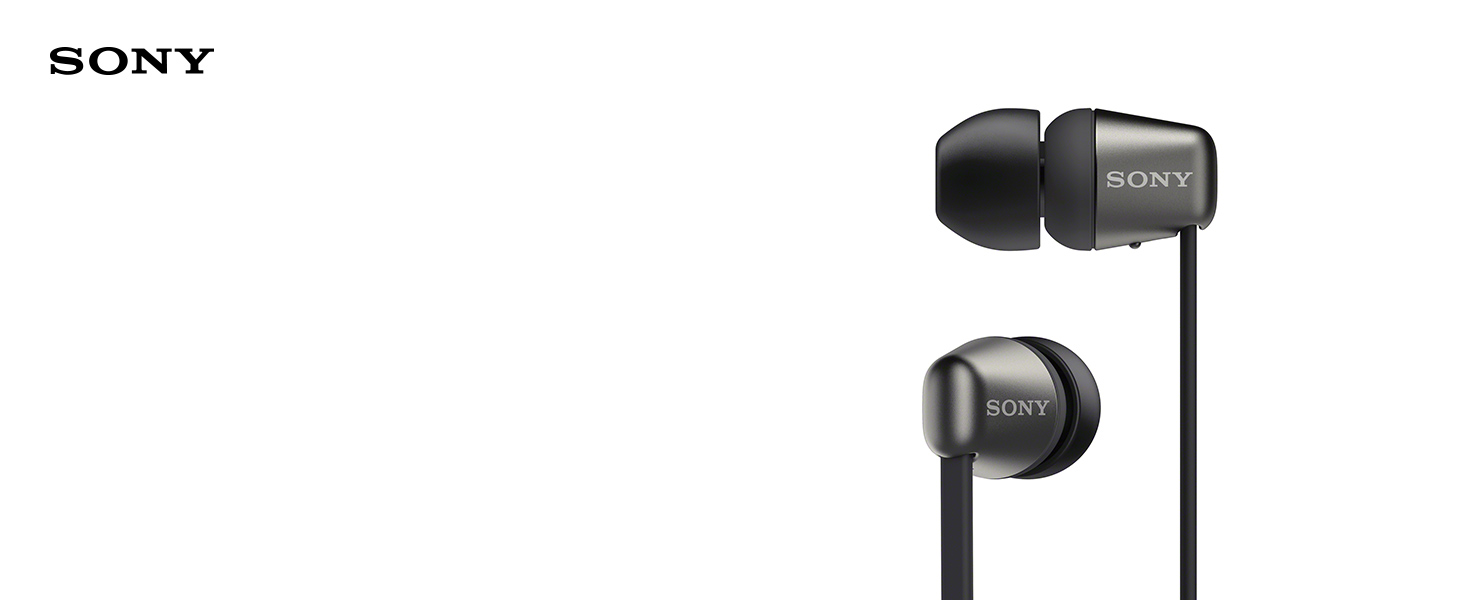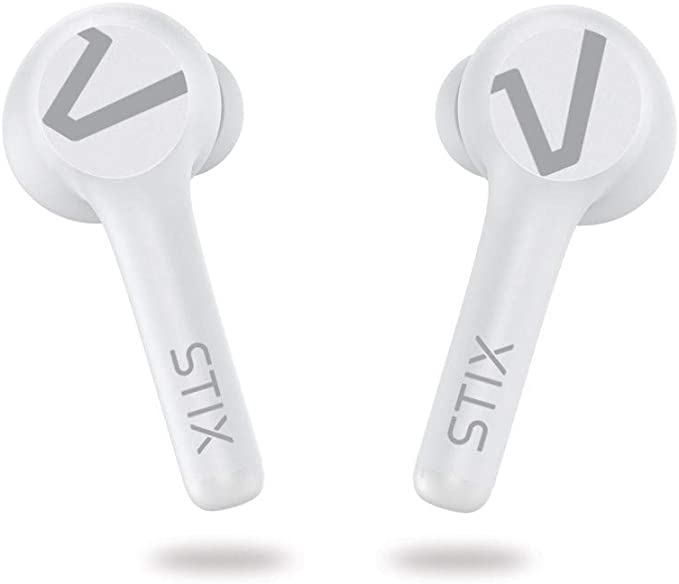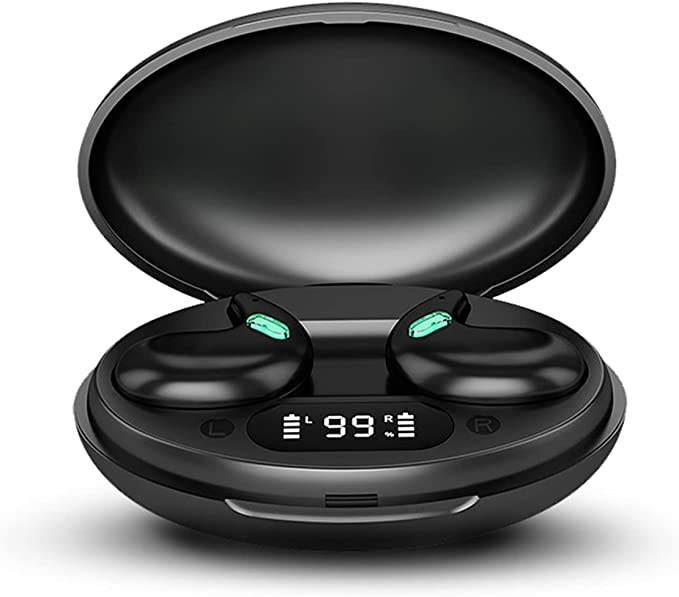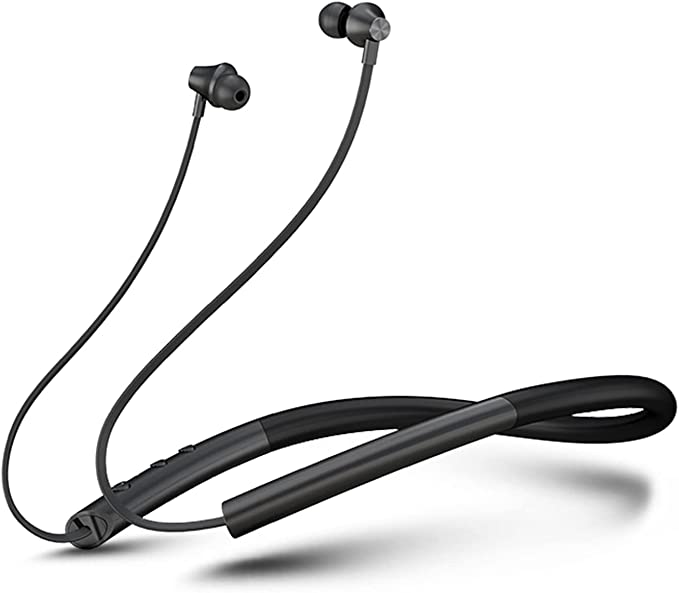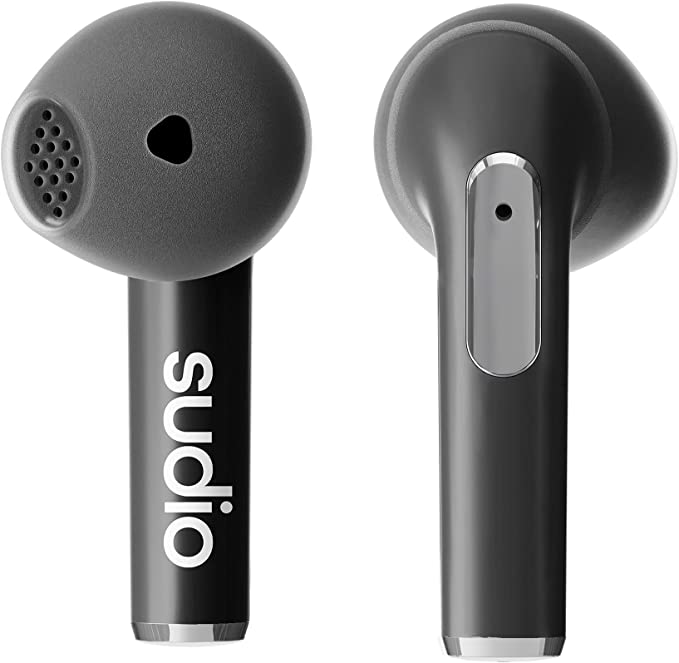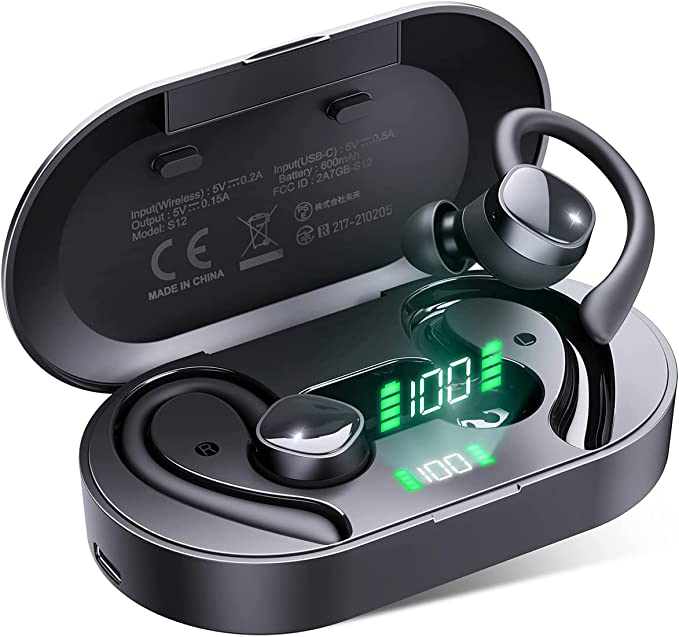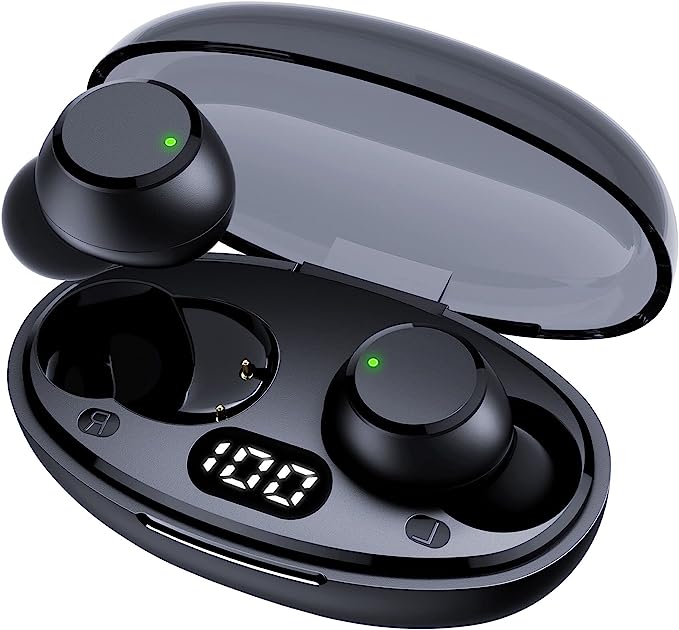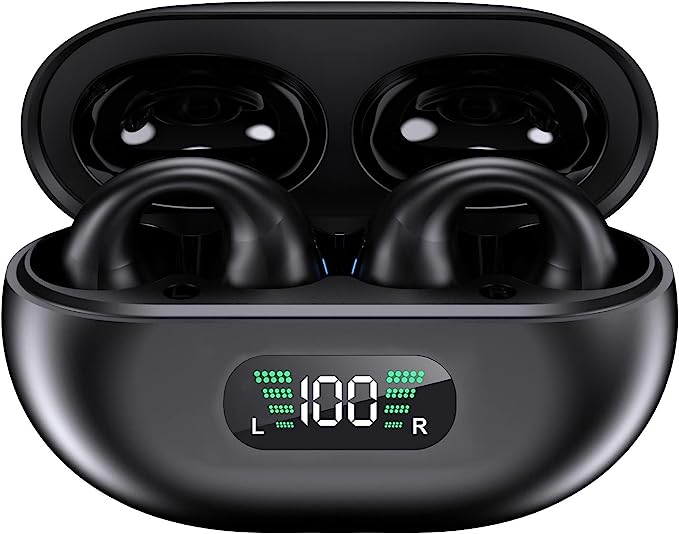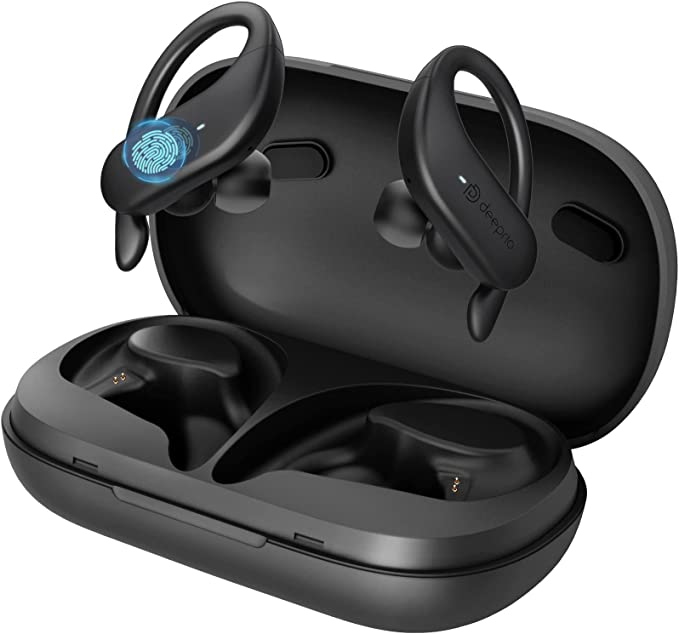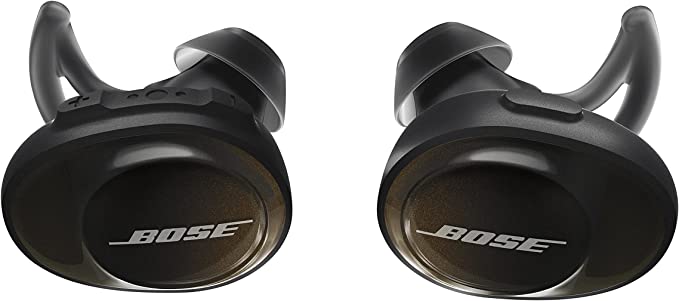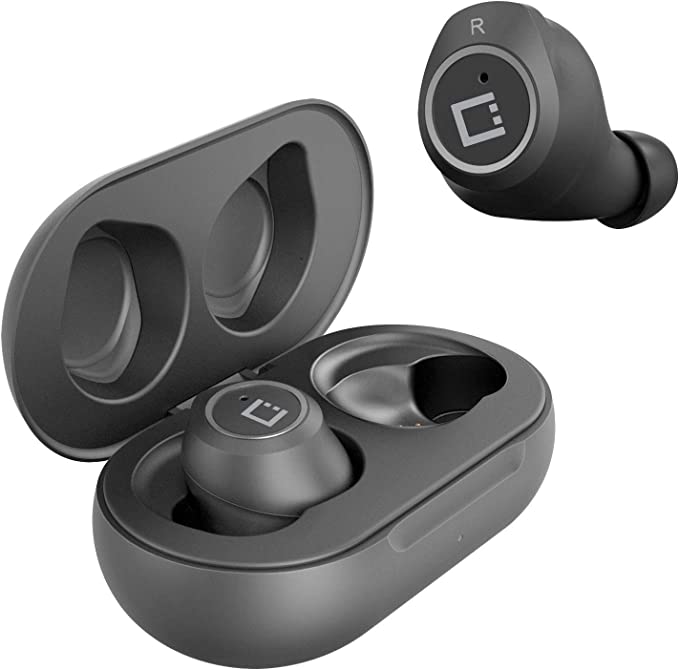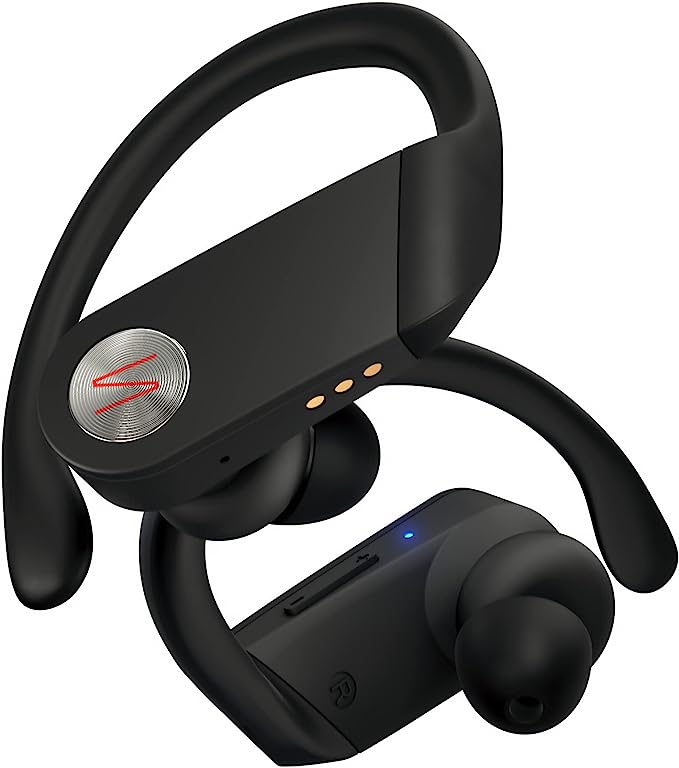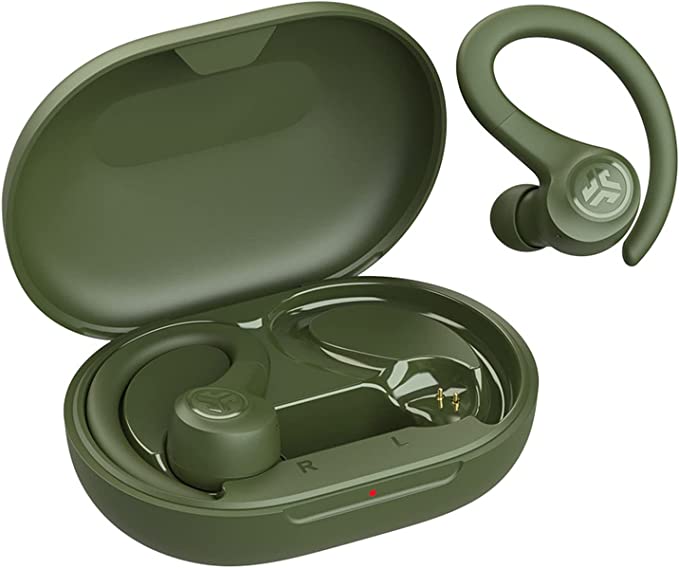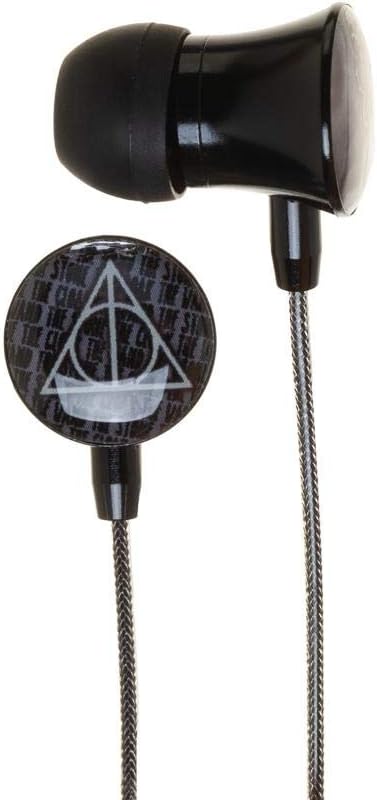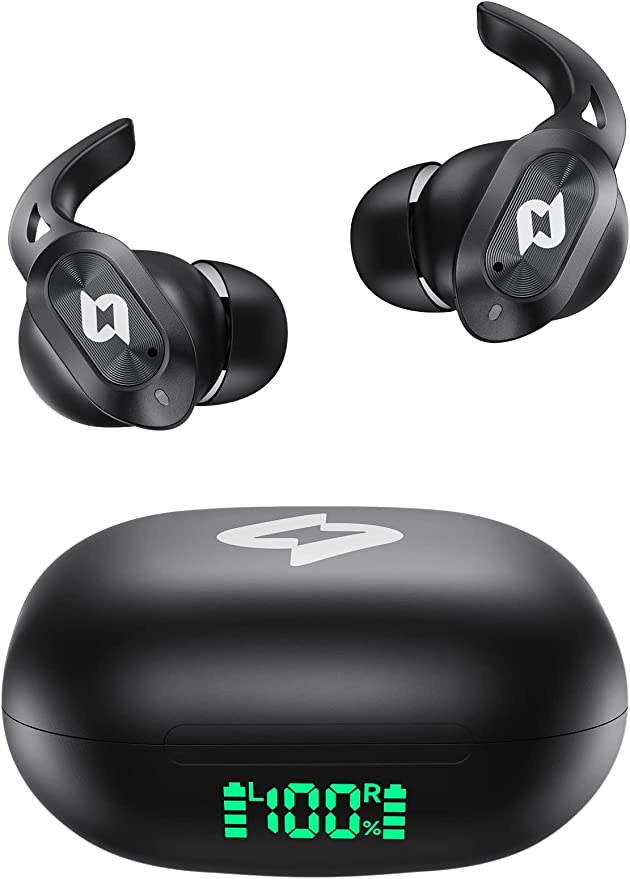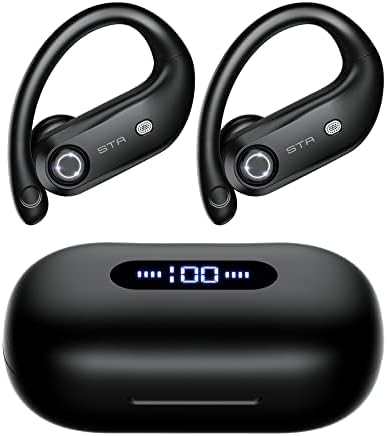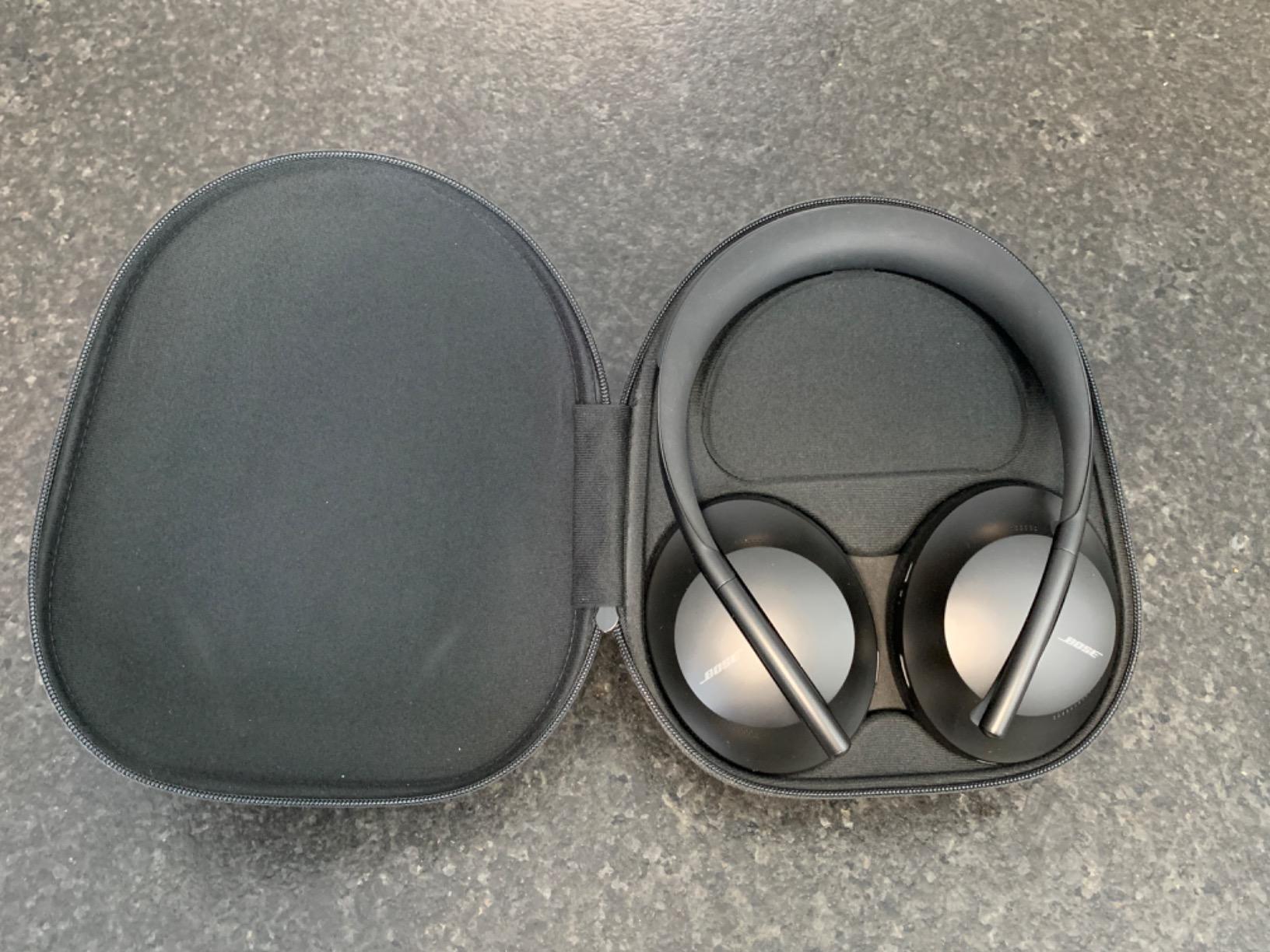STADOR T69 Wireless Earbuds: Unveiling the Science of Modern Audio Freedom
Update on May 30, 2025, 3:19 p.m.
Pop quiz: what’s tiny, often found nestled in ears from bustling city cafes to serene hiking trails, and absolutely packed with an astounding amount of science? If you guessed wireless earbuds, you’re spot on. These diminutive marvels have, in a remarkably short time, become almost indispensable companions in our daily lives. We rely on them for our morning podcast ritual, for that crucial work call on the go, for the playlist that powers our workouts, and for a moment of auditory escape. But beyond the convenience and the ever-shrinking form factors, have you ever paused to consider the sheer technological wizardry that makes them sing, connect, and endure?
We all have a mental checklist for what makes a “good” pair of wireless earbuds. We crave rich, immersive sound, a connection that doesn’t stutter or abandon us mid-song, battery life that can outlast our busiest days, and a design resilient enough to handle life’s little splashes. Today, we’re going to embark on an exploratory journey. Our guide? The STADOR T69 Wireless Earbuds. Now, this isn’t a review in the traditional sense. Instead, we’ll use the features claimed by a typical modern earbud like the T69 as a launchpad to understand the fascinating scientific principles and engineering feats that are now commonplace in the world of personal audio. So, let’s peel back the layers and unravel the tech magic, one scientific concept at a time.

The Digital Handshake: Understanding Bluetooth 5.3 and Seamless Connection
More Than Just Cutting the Cord
The very essence of “wireless” earbuds lies in their ability to communicate without tethers, and for the vast majority, that means Bluetooth. The STADOR T69, for instance, states it utilizes Bluetooth 5.3, promising fast and stable automatic connections within a range of up to 33ft (around 10 meters). But what does that version number truly signify, and how does this invisible handshake keep our audio flowing smoothly?
Bluetooth technology itself has a rather charming origin story, named after the 10th-century Danish King Harald “Bluetooth” Gormsson, famed for uniting warring Scandinavian tribes. Much like its namesake, the Bluetooth standard was conceived to unite different communication protocols from various devices. Fast forward to today, and Bluetooth 5.3 represents one of the more recent evolutions of this standard, maintained by the Bluetooth Special Interest Group (SIG). Each iteration aims to build upon the last, offering enhancements that, while often subtle to the end-user, contribute significantly to the overall experience.
So, what does a version like Bluetooth 5.3 generally bring to your ears?
One of the key areas of improvement in later Bluetooth versions often revolves around connection stability and efficiency. This means the link between your earbuds and your smartphone or laptop is less prone to interference from other wireless signals in our increasingly crowded radio-frequency environments. Imagine fewer frustrating dropouts during that pivotal moment in an audiobook or a crucial point in a business call. Furthermore, Bluetooth 5.3 can incorporate features that allow for lower power consumption, which is vital for small, battery-operated devices like earbuds, helping to eke out more listening time. It also lays some of the groundwork for next-generation capabilities like LE Audio (Low Energy Audio), which promises further improvements in audio quality, power efficiency, and new functionalities such as Auracast™ broadcast audio – though it’s important to note that simply having Bluetooth 5.3 doesn’t automatically mean a device supports all LE Audio features; that depends on the specific implementation by the manufacturer.
Then there’s the “auto-pairing” or “one-step pairing” magic that products like the T69 describe. When you first introduce your earbuds to your phone, they perform an initial “pairing” process – a sort of digital secret handshake where they exchange security keys to recognize each other in the future. Once this trust is established, subsequent connections are much faster. Often, the charging case itself plays a role; opening the case can signal the earbuds to power on and automatically seek out their known partner device. This seamless reconnection is a refined aspect of the Bluetooth protocol designed to get you from pocket to playlist with minimal fuss.
Dr. Audio’s Insight: The airwaves around us are bustling with Wi-Fi, cellular signals, microwaves, and countless other Bluetooth devices. Ensuring your earbuds maintain a clear, uninterrupted stream of your favorite tunes or important conversations in this invisible cacophony is a constant engineering challenge. Modern Bluetooth versions employ sophisticated techniques like adaptive frequency hopping (AFH), where the signal rapidly jumps between different frequencies to avoid those that are busy or experiencing interference. It’s a high-speed game of digital hide-and-seek, all happening in milliseconds, just to keep your audio pristine.

Crafting Your Personal Soundscape: The 13mm Drivers and Hi-Fi Hopes
The Heartbeat of Your Music
At the core of any audio device, the element that actually produces the sound you hear is the driver, or speaker. The STADOR T69 highlights its use of 13-millimeter speakers (often referred to as dynamic drivers in earbuds) and its aim to deliver “immersive Hi-Fi stereo sound.” Let’s unpack what this means for your listening pleasure.
Dynamic drivers, the workhorses of the earbud world, operate on a beautifully elegant electromagnetic principle. An audio signal, which is an electrical current, flows through a very fine coil of wire (the voice coil) that is attached to a flexible cone or dome (the diaphragm). This voice coil is suspended within a magnetic field created by a permanent magnet. As the electrical audio signal fluctuates, it causes the voice coil to move back and forth within the magnetic field, which in turn causes the attached diaphragm to vibrate. These vibrations push and pull the air, creating sound waves that travel to your eardrums.
The size of the driver, such as the 13mm ones in the T69, can influence the sound characteristics. Generally speaking, a larger diaphragm has the potential to move a greater volume of air. This can be particularly beneficial for reproducing lower frequencies, or bass, with more authority and depth. Imagine a larger drum versus a smaller one; the larger drum can produce a deeper, more resonant boom. However, driver size isn’t the sole determinant of sound quality. The material of the diaphragm (the product description mentions “triple-layer composite diaphragms,” suggesting an engineered material designed for specific stiffness and damping properties), the design of the acoustic chamber within the earbud, and the precision of the voice coil and magnet assembly all play crucial roles.
The term “Hi-Fi,” short for “High Fidelity,” is a noble aspiration in audio. It refers to the goal of reproducing sound that is as faithful as possible to the original recording, with minimal distortion, noise, or coloration. In the context of earbuds, achieving true Hi-Fi can be challenging due to size constraints and the complexities of ear canal acoustics, but it signifies an intent to deliver a clear, detailed, and accurate sound. “Stereo sound,” of course, means that there are two independent audio channels, one for each ear. This allows for the creation of a soundstage – a sense of space and dimensionality in the music. You can perceive instruments or voices as coming from different locations, left, right, or even somewhat in the center, making the listening experience far more engaging and realistic than monaural (single-channel) audio.
Why does all this matter to you? It’s the difference between passively hearing a song and actively experiencing it. Well-engineered drivers and a commitment to fidelity can mean a bassline you can feel, vocals that sound present and clear, delicate high-frequency details like cymbal shimmers that aren’t lost, and an overall sound that is balanced and enjoyable across various genres of music or spoken word content.
Dr. Audio’s Insight: One of the most fascinating aspects of earbud design is the “tuning” or “voicing.” This is where engineers, often with a keen ear for music, make tiny adjustments to the acoustic and electronic properties of the earbuds to shape their final sound signature. Some earbuds are tuned for a powerful bass response favored by fans of electronic or hip-hop music; others might aim for a more neutral, “monitor-like” sound preferred by audiophiles or those who listen to classical or acoustic genres. It’s a delicate blend of art and science, and it’s why even earbuds with similar-looking specifications can sound quite different from one another. The “triple-layer composite diaphragms” mentioned for the T69, for example, are likely an attempt to balance stiffness (for crisp highs and mids) with good damping (to control resonances and prevent muddy bass).

Powering Through Your Day (and Beyond!): The Science of 56-Hour Playtime
The Unseen Energy That Keeps the Music Playing
A modern wireless earbud’s utility is inextricably linked to its battery life. Few things are more deflating than your audio cutting out середине a crucial task or a long journey. The STADOR T69 makes a bold claim: up to 7 hours of listening time on a single charge for the earbuds, with the charging case providing an additional 3 full charges, culminating in a total of up to 56 hours of playback. The case itself has a 400mAh battery capacity and features an LED power display, along with the conveniences of both wireless and Type-C charging. This impressive endurance relies on sophisticated battery technology and power management.
At the heart of these tiny powerhouses are typically lithium-polymer (Li-Po) batteries, or similar lithium-ion chemistries. These batteries are favored in portable electronics for several key reasons: they have a high energy density (meaning they can store a relatively large amount of energy in a small and lightweight package), they can be manufactured in various shapes to fit snugly into compact earbud designs, and they generally lack the “memory effect” that plagued older rechargeable battery technologies. The earbuds themselves contain very small Li-Po cells, while the charging case houses a larger one – in this instance, 400 milliampere-hours (mAh). An mAh is a unit of electric charge, indicating how much current a battery can provide for a certain amount of time (e.g., a 400mAh battery could theoretically supply 400 milliamps for one hour, or 40 milliamps for ten hours).
The charging case effectively acts as a portable “mothership” or power bank for the earbuds. When you dock the earbuds, electrical contacts meet, and the case’s battery begins to replenish the smaller batteries within the earbuds. The claim of “56 hours total” is derived by adding the earbuds’ standalone playtime to the multiple recharges offered by a fully charged case. It’s crucial to understand that such playtime figures are usually achieved under specific laboratory conditions – often at moderate volume levels, using a standard audio codec (like SBC or AAC), and with a stable Bluetooth connection. Real-world usage, with higher volumes, more demanding codecs, or frequent reconnections, might yield slightly different results, but the figure still provides a strong indication of overall battery capability.
The LED power display on the charging case is a simple yet invaluable feature. It typically shows the remaining charge percentage of the case itself and often indicates the charging status of each individual earbud (e.g., pulsing light when charging, solid when full). This eliminates the frustrating guesswork of wondering if you have enough juice for your next outing.
Modern charging conveniences are also highlighted with the T69. Wireless charging support means you can simply place the case on a compatible charging pad (often using the Qi standard, pronounced “chee”) and power flows via electromagnetic induction. A transmitter coil in the pad creates an oscillating magnetic field, which induces an electrical current in a receiver coil inside the earbud case, thus charging its battery. No fiddling with cables! For wired charging, the inclusion of a USB-C port is now the norm. USB-C is lauded for its reversible connector (no more fumbling to plug it in the right way), its robustness, and its capability to support faster charging speeds if paired with a compatible USB Power Delivery (PD) charger and cable, although the specific charging speed for the T69 isn’t detailed beyond “Type-C fast charging.”
Why is all this battery science important for you? It translates directly to freedom and convenience. Long total playtime means less frequent “wall-hugging” to recharge the case, making the earbuds ideal for extended travel, multi-day conferences, or simply a week of regular use without battery anxiety. The flexibility of having both wireless and USB-C charging options means you’re more likely to find a convenient way to top up, wherever you are.
Dr. Audio’s Insight: The unsung hero in achieving long battery life in such small devices is often the power management integrated circuit (PMIC) and the efficiency of the Bluetooth System-on-Chip (SoC). These components work tirelessly to optimize power consumption, putting parts of the circuitry to sleep when not actively needed, managing charging cycles to prolong battery health, and ensuring every last milliampere-hour is used as efficiently as possible. The quest for even greater energy density in batteries and lower power consumption in electronics is a relentless pursuit in materials science and semiconductor engineering, promising even more impressive playtime for future generations of portable devices.
Built for the Real World: IPX7 Waterproofing and Taking Calls
Earbuds That Can Brave the Elements (and Your Voice)
Our lives aren’t lived in pristine, controlled environments. We sweat during workouts, get caught in unexpected rain, and need to make calls in less-than-quiet surroundings. Earbuds designed for real-world use, like the STADOR T69, often boast features like an IPX7 waterproof rating and incorporate advanced MEMS microphones for clear calls. Let’s explore the science that makes them resilient and articulate.
First, the waterproofing. The IP rating, which stands for Ingress Protection, is an international standard (IEC 60529) that classifies the degrees of protection provided by an enclosure against the intrusion of solid objects (like dust) and liquids (like water). In the IPX7 rating: * The “IP” is self-explanatory. * The “X” means the device has not been officially rated for protection against solid particle ingress. This doesn’t necessarily mean it offers no dust protection, just that it hasn’t been tested and certified for that specific aspect according to the standard. * The “7” is the crucial part for liquid protection. It signifies that the device can withstand immersion in water up to 1 meter deep for a duration of 30 minutes without harmful ingress of water.
Achieving an IPX7 rating in a device as small and complex as an earbud, with its seams, charging contacts, and microphone ports, is a significant engineering feat. It’s generally accomplished through a combination of meticulous physical sealing of all potential entry points and, increasingly, the application of nano-coatings to the internal electronic components. These ultra-thin, hydrophobic (water-repelling) coatings work at a microscopic level to prevent water molecules from adhering to and damaging sensitive circuits, even if some moisture does manage to get past the physical seals. For you, an IPX7 rating means peace of mind. You can push through that intense, sweaty gym session, go for a run in a drizzle, or not panic if your earbuds accidentally take a brief dip, knowing they’re built to survive.
Now, let’s turn to call quality. Making your voice sound clear and natural to the person on the other end of the line, especially when you’re in a noisy environment, is a surprisingly complex challenge for tiny earbuds. The STADOR T69 mentions using “premium MEMS microphones.” MEMS stands for Micro-Electro-Mechanical Systems. These are essentially microscopic machines with moving parts, all fabricated on a silicon chip, much like computer processors. MEMS microphones have several advantages over older electret condenser microphones (ECMs) commonly found in less advanced devices. They tend to be smaller, more power-efficient, offer better sensitivity, have a more consistent performance across units, and are more resistant to vibration and temperature changes.
The product description also notes that these MEMS microphones “can pick up your voice from multiple directions, and make your voice clear in calls.” While the specific noise-cancellation technology isn’t detailed for the T69, this phrasing often implies the use of multiple microphones within each earbud. When two or more microphones are strategically placed, their signals can be processed using sophisticated algorithms (often part of a technology called cVc - Clear Voice Capture, or similar digital signal processing routines) to differentiate your voice from unwanted background noise. Techniques like beamforming can create a focused “listening beam” towards your mouth, effectively amplifying your speech while attenuating sounds coming from other directions. Other algorithms might actively identify and suppress steady-state noises like engine hum or air conditioner whir. The goal is to deliver a clean, intelligible voice signal, making your conversations clearer and more professional, even when you’re not in a quiet office.
Dr. Audio’s Insight: The science of capturing and transmitting clear voice is a fascinating intersection of acoustics, electronics, and advanced signal processing. Think about it: your earbuds’ microphones are often positioned quite far from your mouth, and they’re surrounded by all sorts of ambient sounds. To make you sound like you’re speaking directly into the phone, these tiny systems have to perform a remarkable feat of audio filtering and enhancement in real-time. The move towards MEMS technology and multi-microphone arrays has been a game-changer for call quality in small wearable devices.
The Subtle Art of Control: Smart Touch Commands
Your Fingertips as the Conductor’s Baton
Interacting with our earbuds shouldn’t require a course in button-mashing. Modern designs, including the STADOR T69, often feature smart touch controls, allowing you to manage music playback, answer calls, or even summon your phone’s voice assistant with simple taps or swipes on the earbud surface. This sleek, buttonless approach is powered by a clever bit of science: capacitive touch sensing.
You might be familiar with capacitive touch from your smartphone screen. The principle is similar in earbuds. The touch-sensitive area on the earbud has a very thin, transparent conductive coating. This coating stores a small electrical charge, creating an electrostatic field. Your body, particularly your skin, is also electrically conductive and can store a charge. When your fingertip approaches or touches this sensor area, it changes the local electrostatic field, effectively drawing a tiny bit of charge away from the sensor or altering its capacitance (its ability to store charge).
The earbud’s internal electronics are constantly monitoring this capacitance. When they detect a change that signifies a touch, they register it as an input. Different gestures can be programmed to trigger different commands: * A single tap might play or pause music, or answer/end a call. * A double-tap could skip to the next track or go to the previous one. * A triple-tap (on some models) might control volume or other functions. * A long press (touch and hold) is often used to activate your phone’s voice assistant (like Siri or Google Assistant) or to manage pairing modes.
The beauty of capacitive touch is its sensitivity, its ability to work through thin, non-conductive outer layers (like the plastic casing of the earbud), and the fact that it doesn’t require any physical pressure to activate, unlike a mechanical button. This allows for a more seamless and often more durable design, as there are no moving parts to wear out or let in moisture. It contributes to that clean, minimalist aesthetic many modern earbuds strive for, while offering a surprisingly intuitive way to stay in control of your audio world without constantly reaching for your phone.
Why does this matter for your daily use? It means you can adjust your listening experience or manage communications effortlessly, even when your hands are full, you’re wearing gloves (some capacitive sensors are sensitive enough for thin gloves), or you simply prefer a more discreet way to interact with your tech. It’s about making the technology feel less like a tool you operate and more like an extension of your intent.
The Symphony of Technologies: Bringing It All Together
As we’ve journeyed through the various features of a modern wireless earbud, using the STADOR T69 as our illustrative example, it becomes clear that these devices are far more than just tiny speakers with Bluetooth. They are a testament to a remarkable symphony of technologies, each playing a crucial part, all meticulously engineered to fit into an incredibly compact form factor.
It’s the advanced Bluetooth 5.3 ensuring that the digital handshake with your phone is quick and steadfast, keeping your audio stream flowing. It’s the carefully designed 13mm dynamic drivers working to translate electrical signals into the rich tapestry of sound that fills your ears. It’s the high-energy-density lithium-polymer batteries and intelligent power management systems that grant you hours upon hours of untethered listening. It’s the resilience offered by an IPX7 waterproof rating, born from clever sealing and material science, allowing your music to accompany you through sweat and drizzle. It’s the precision of MEMS microphones coupled with sophisticated signal processing striving to make your voice crystal clear across the miles. And it’s the elegant simplicity of capacitive touch controls that put command랙 at your fingertips.
None of these technologies operate in a vacuum. They are interdependent, their performance often influencing one another. A more efficient Bluetooth chip, for example, can contribute to longer battery life. Advanced audio codecs, which compress and decompress the digital audio signal, can impact both sound quality and the demands placed on the Bluetooth connection and battery. The physical design of the earbud housing affects not only how the drivers sound but also how well the device seals against water and how comfortable it is to wear for extended periods.
The bigger picture here is how these converging advancements in materials science, semiconductor technology, acoustics, wireless communication, and software engineering have democratized access to a high-quality, incredibly convenient personal audio experience. What was once the domain of bulky headphones or niche audiophile gear is now available in a form that can disappear into your pocket.
So, the next time you pop in your wireless earbuds, whether they’re the STADOR T69 or any other marvel of modern engineering, take a moment. Listen not just to the music or the podcast, but also, perhaps, to the faint, triumphant hum of all the science and ingenuity that made that perfectly seamless, wonderfully immersive audio moment possible. It’s a small reminder of how profoundly technology, when thoughtfully applied, can enhance and enrich our daily lives.

Beyond the Horizon: What’s Next for Wireless Audio?
The world of wireless audio is anything but static. The relentless pace of innovation promises even more exciting developments just over the horizon. We’re already seeing the groundwork being laid for LE Audio, a next-generation Bluetooth audio standard. LE Audio is poised to deliver even higher audio quality at lower bitrates (thanks to new codecs like LC3), consume less power (further extending battery life), and introduce groundbreaking new capabilities like Auracast™ broadcast audio. Imagine being in an airport and being able to tune your earbuds directly into flight announcements, or connecting multiple pairs of earbuds to a single smartphone to share music with friends – Auracast aims to make such scenarios a reality.
Beyond Bluetooth itself, expect to see continued advancements in active noise cancellation (ANC), making it even more effective at silencing the world around you, and perhaps more adaptive to different sound environments. We might see more widespread integration of biometric sensors into earbuds, capable of tracking heart rate, body temperature, or even activity levels, turning your audio device into a discreet health and wellness monitor. And, of course, the pursuit of ever-more-perfect sound reproduction will continue, with innovations in driver materials, acoustic designs, and personalized audio profiles that can tailor the sound to your unique hearing characteristics.
The journey of wireless audio is one of constant refinement, miniaturization, and an ever-deepening understanding of how we perceive and interact with sound. The tiny earbuds of today are just one milestone on a path leading towards an even more immersive, intelligent, and seamlessly integrated auditory future.
